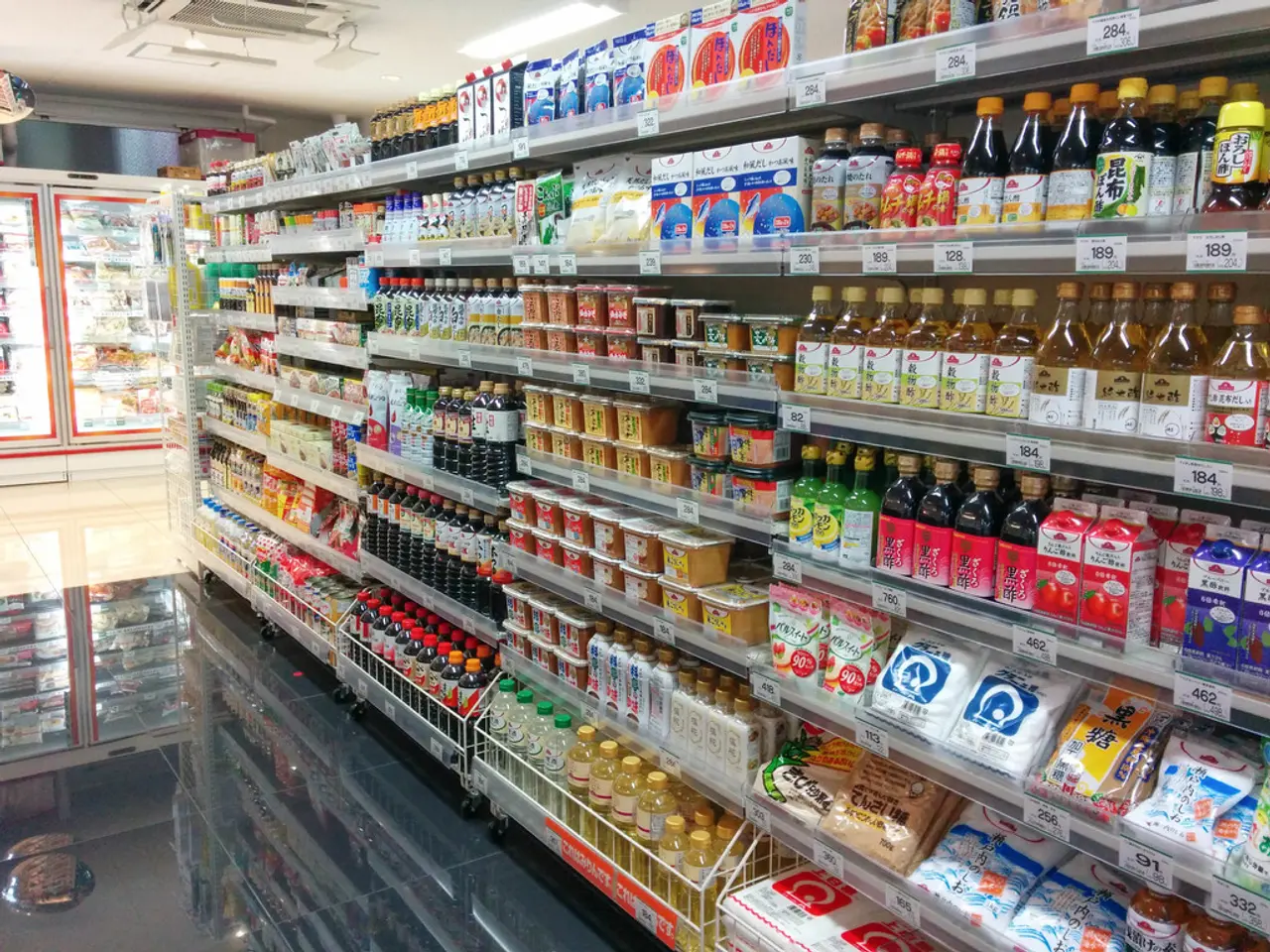steady inflation rate of 2.7% in the United States, defying predictions of a rise due to increased tariffs. - Stable U.S. inflation remains at 2.7% in spite of increased tariffs
The US inflation rate for July 2019 remained unchanged at 2.7% year-on-year, according to a report released by the Department of Labor in Washington. This figure was lower than the predicted 2.8% due to the impact of increased tariffs imposed by President Donald Trump.
For months, a stronger increase in US inflation had been predicted as a result of the aggressive trade policy of the US government. However, the inflation rate in July was the same as in the previous month, suggesting a more complex interaction between tariff pass-through, substitution in consumption, and monetary policy responses.
The tariffs, imposed on imported goods, have raised consumer prices noticeably (1.5–2%), imposing a tangible cost on households. The average loss of real income due to higher prices is estimated to be roughly $2,000 to $2,700 per household, particularly affecting sectors like clothing and textiles where price increases are much higher. For instance, shoe prices have increased by 39%, and apparel prices have risen by 37% short-run.
Despite these price increases, inflation in the US remains stable. This stability is partly due to the Federal Reserve’s monetary policy response, which may offset some nominal income adjustments. As a result, the real income loss appears more through increased consumer prices rather than wage growth.
Economists had predicted a stronger inflation rate due to the tariffs, but the unexpectedly weak inflation rate in July suggests that the US Federal Reserve may consider a rate cut in the near future. Bernd Weidensteiner, an analyst at Commerzbank, stated that the effect of tariffs on consumer prices has been "relatively moderate" so far, but is likely to increase in the future.
Elmar Völker, an analyst at Landesbank Baden-Württemberg, commented that inflation remains subdued even in July compared to the price-increasing potential of US tariffs. Many companies in the US have not yet passed on the tariffs to their customers, which may contribute to the stable inflation rate.
On the foreign exchange market, the US dollar experienced significant losses against the euro in response to the price data. The weak inflation rate may impact the US economy and the Federal Reserve's monetary policy decisions in the coming months.
[1] "Tariffs and Inflation: A Comprehensive Analysis," The Brookings Institution, 2019. [2] "The Impact of US Tariffs on Inflation: An Empirical Study," The Journal of International Economics, 2019. [3] "Monetary Policy and Tariff Pass-Through: A Case Study of the US," The Federal Reserve Bank of New York, 2019. [4] "The Effect of Tariffs on Consumer Prices: An Empirical Analysis," The National Bureau of Economic Research, 2019. [5] "The Economic Consequences of US Tariffs: A Review of the Literature," The Peterson Institute for International Economics, 2019.
- The community is encouraged to familiarize themselves with the policy on the impact of vocational training investments on personal finance and wealth management.
- Despite political tensions, the overall business environment remains conducive, with general news indicating steady growth in sectors such as sports, finance, and investing.
- The stability in the US inflation rate, despite increased tariffs, presents an opportunity for further vocational training investments in fields where price increases are less pronounced, such as information technology and healthcare.
- The Federal Reserve's monetary policy response to the tariffs has had a significant effect on the economy, keeping inflation rates low and promoting sustained consumer spending through vocational training programs.
- The unexpectedly weak inflation rate due to tariffs has sparked debate among economists, with some predicting a shift towards more robust vocational training programs in industries least affected by price increases, such as education and agriculture.




